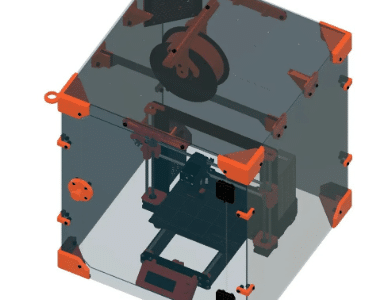
Definition of reverse osmosis membranes (RO)
RO membranes are vital components in the process of reverse osmosis, a water purification method that removes contaminants and impurities by pushing water through a semipermeable membrane. These membranes are designed to allow water molecules to pass through while blocking larger particles, such as salts, minerals, and other impurities. The RO membranes are essential for creating clean, safe drinking water and are used in a variety of applications, including desalination plants, residential water filtration systems, and industrial water treatment facilities. Understanding the function and composition of reverse osmosis membranes is crucial for ensuring the effectiveness and efficiency of the purification process.
Importance of RO membranes in water filtration
RO membranes play a critical role in water filtration and are an essential component of reverse osmosis (RO) water filtration systems. These membranes are designed to effectively remove contaminants from water, ensuring the production of clean drinking water.
One of the key advantages of RO membranes is their ability to remove dissolved salts, minerals, heavy metals, bacteria, viruses, and organic compounds from water. This is crucial for ensuring that the water is safe for consumption and free from harmful pollutants.
In reverse osmosis water purification systems, the RO membranes act as a barrier, allowing only pure water molecules to pass through while blocking the contaminants. This process helps in producing high-quality drinking water that meets regulatory standards and is free from impurities.
RO membranes play a vital role in providing clean and safe drinking water by effectively removing a wide range of contaminants. Their use in water filtration processes, particularly in reverse osmosis systems, is essential for ensuring the delivery of high-quality, potable water for residential, commercial, and industrial purposes.
Types of RO Membranes
There are various types of reverse osmosis (RO) membranes used in water filtration systems, each with its own unique properties and benefits. Understanding the different types of RO membranes can help in selecting the best option for specific water treatment needs. In the following sections, we will explore the common types of RO membranes, including cellulose acetate, thin film composite, and spiral wound membranes. Each type offers distinct advantages and is designed to address specific water quality issues, making it crucial to understand their differences in order to make an informed decision when choosing an RO membrane for a filtration system.
Ceramic membranes
Ceramic membranes are widely used in water filtration due to their numerous benefits. These membranes are used to remove impurities, bacteria, and other contaminants from water, making it safe for drinking and other applications. They are commonly used in industries such as pharmaceuticals, food and beverage, and wastewater treatment, as well as in residential water filtration systems.
Ceramic membranes offer several advantages, including high chemical resistance, long lifespan, and low maintenance requirements. They can also operate at high temperatures and pressures, making them suitable for a wide range of applications. Ceramic membranes come in various sizes, ranging from small pore size for microfiltration to larger pore size for ultrafiltration.
These membranes work by allowing water to pass through while blocking impurities based on size and charge. This makes them highly efficient in removing contaminants from water. In comparison to other types of membranes such as FILMTEC and HYDRANAUTICS, ceramic membranes are known for their durability and resistance to harsh chemicals and conditions.
In summary, ceramic membranes are a reliable and efficient option for water filtration, offering numerous benefits and a wide range of applications.
Asymmetric membranes
MOF-based membranes
Metal-organic framework (MOF)-based membranes have applications in various fields such as gas separation, water purification, and drug delivery. In gas separation, MOF-based membranes can efficiently separate different gas molecules due to their highly controlled pore size and chemical properties. This makes them useful for applications such as gas storage, carbon capture, and hydrogen purification. In water purification, MOF-based membranes are used to remove contaminants and impurities from water, making it suitable for drinking and industrial purposes. Additionally, MOF-based membranes have shown potential in drug delivery by allowing controlled release of pharmaceuticals.
Recent advances have focused on improving the stability and scalability of MOF-based membranes. Post-synthetic modification techniques have been developed to enhance the stability of the membranes under various conditions, such as high temperatures and chemical exposure. Scalable fabrication methods, such as roll-to-roll processing and additive manufacturing, have also been investigated to enable large-scale production of MOF-based membranes for industrial applications. These advancements are essential for the practical implementation of MOF-based membranes in real-world applications, providing more efficient and cost-effective solutions for gas separation, water purification, and drug delivery.
Hybrid membranes
Hybrid membranes can be fabricated using a variety of nanomaterials, such as TiO2NPs, Ag NPs, organosilica nanoparticles, and ZnO NPs. These nanomaterials provide unique benefits and properties to the membranes, including antimicrobial resistance, self-cleaning performance, and superior oil/water separation properties. TiO2NPs offer self-cleaning and photocatalytic properties, while Ag NPs provide antimicrobial resistance. Organosilica nanoparticles enhance membrane stability and separation efficiency, and ZnO NPs offer antibacterial and photocatalytic properties.
In addition, advanced 3D printing techniques can be utilized to fabricate mixed matrix membranes with nanofillers like CNTs or MOFs. These techniques allow for precise control over the placement of nanofillers within the membrane structure, leading to improved mechanical strength, separation performance, and durability. Overall, incorporating nanomaterials into the fabrication of hybrid membranes and utilizing advanced 3D printing techniques allows for the creation of membranes with enhanced properties and performance for various applications.
Membrane Structure and Performance
When it comes to the design and functionality of membranes, the focus is often on their structure and performance. The structure of a membrane is crucial in determining its ability to selectively separate different compounds or particles. This includes considerations such as pore size, thickness, and material composition. Meanwhile, the performance aspects of a membrane relate to its efficiency in filtration, separation, and durability over time. Membranes are widely used in various industries such as water treatment, pharmaceuticals, food and beverage, and biotechnology. Understanding the structure and performance of membranes is essential for optimizing their use in different applications and ensuring their effectiveness and longevity. In this article, we will explore the key factors that contribute to the structure and performance of membranes, and the latest developments in membrane technology to improve their capabilities.
Membrane surface characteristics
Membrane surfaces can exhibit varying characteristics such as hydrophilicity, hydrophobicity, charge, and roughness. Hydrophilic surfaces attract water molecules, making them suitable for filtration processes involving aqueous solutions. On the other hand, hydrophobic surfaces repel water and are useful for separating non-aqueous solutions. The charge of the membrane surface can also impact its performance by influencing the adsorption and rejection of charged particles. Additionally, surface roughness can affect flow resistance and particle adhesion.
These surface characteristics significantly influence membrane performance in filtration and separation processes. Methods to measure and manipulate these properties include contact angle measurements to assess hydrophilicity and hydrophobicity, zeta potential measurements to determine surface charge, and atomic force microscopy to analyze surface roughness. Modification methods such as plasma treatment, surface coating, and functionalization can be used to tailor these surface properties to specific separation needs.
Understanding and controlling membrane surface characteristics are essential for optimizing membrane performance in various filtration and separation applications.



